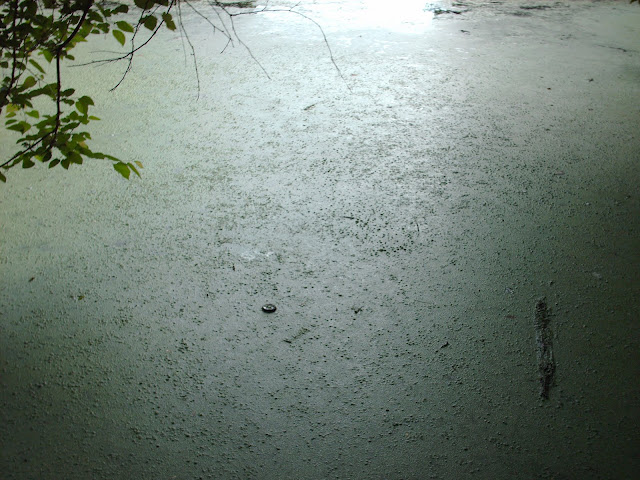Muck
Got Muck?

If your lake has excess weed growth and harmful algal blooms…you got muck. Muck is the real nutrient monster that keeps lakes in a eutrophic grip. Years and years (probably decades) of decaying organic matter have settled on the bottom of the lake, becoming a never ending resource of food for weeds and algae.
Muck happens when runoff carrying fertilizers, grass clippings, leaves, animal and septic waste enters the lake, organic sediment accumulates on the lake-bottom. Dead aquatic weeds, algae, fish and waterfowl feces are also major contributors. The bottom of the lake becomes a compost pile.
What Muck Means
Muck means several things. First, muck means there’s not enough dissolved oxygen circulating from top-to-bottom. When there is sufficient oxygen at the bottom of the lake, aerobic bacteria and other microorganisms that feed on organic muck thrive. In fact, oxygenating the lake-bottom binds up to 97% of the phosphorus and nitrogen in the water to the bottom sediment where it becomes food for beneficial, muck consuming bacteria and insects. Without oxygen, these nutrients fuel weed and algal growth.
Second, instead of beneficial aerobic bacteria, muck means there’s an abundance of anaerobic bacteria which release ammonia, methane, nitrogen gas and carbon dioxide into the water column. Ammonia feeds weeds and algae. Carbon dioxide and methane kill fish at levels greater than 30 mg/l (a very small amount).
Lastly, muck means there’s Hydrogen sulfide gas being released in the lake – the rotten egg smell. Hydrogen sulphide is highly toxic to healthy microorganisms, insects and fish. Simply put, the presence of muck is a clear sign that your lake’s ecosystem is failing.
$$$ Dredging isn’t the Answer
Dredging the lake bottom will not resolve nutrient overloading and restore your lake’s ecosystem. Dredging can deepen the lake, making it more difficult for submerged vegetation to grow, but dredging
- Does nothing for water quality
- Releases phosphates and nitrogen back into the lake
- Does nothing to reduce algae…
- Does not reverse nutrient overloading.
The truth is that dredging does not resolve the issue of nutrient overloading but simply recirculates phosphorus, nitrogen, and other harmful pollutants into the water circulation column. As a result, your lake will continue in the same overloading dynamic where nutrients fuel excess weed and harmful algae blooms. The cycle of muck formation will continue.
The truth? Dredging is an exorbitantly expensive, ineffective short-term solution. Read more about the dangers of dredging click <here>.
Nature Has THE Answer
Nature has the answer to muck reduction: Oxygen and Aerobic Bacteria. When the lake has sufficient oxygen and a healthy population of aerobic bacteria at the bottom of the lake…muck, weeds and harmful algae disappear.






















